The palace garden was the most important thing for King Louis XIV and is world-famous today. The gardens feature 14 fountains and 32 water basins with water bubbling to the rhythm of the music. The fountains in the castle garden were created in the 17th century based on the theme of Greco-Roman mythology and are the focus of the water features. Whether made of metal or marble, the gods, figures, and animals seem to move in the intoxication of the water. Great compositions by Lully, Charpentier, or Rameau provide a musical accompaniment to your royal walk. The fountains specifically give a spectacular view during the months of April to November since Night Fountains and Musical Fountains Shows take place.
Palace of Versailles garden entrance welcomes visitors with the monumental four seasons fountains. At the four intersections of the main alleys are located four fountains, depicting the four seasons. To the north, The Summer Fountain also known as Ceres Fountain, and Spring Fountain also known as Flora Fountain are located. To the south Winter Fountain formerly called Saturn Fountain and Autumn Fountain formerly called Bacchus Fountain stands out. During the 1670s these fountains were built having a wide viewpoint of all four fountains from the ending of Latona’s Parterre and the start of Royal Way.
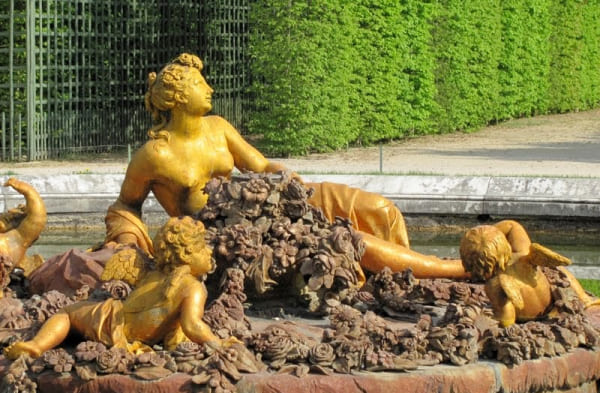
Apollo’s Fountain during the 1970s and 1980s was created by Charles Le Brun and Jean Baptiste Tuby sculpted it. It is located at the junction of the main axes of the Gardens of Versailles. Apollo’s statue illustrates a theme that is also depicted in the painted decorations inside the Hall of Mirrors. Apollo rises from the water in his chariot, announced by the Tritons with conch trumpets. The fountain was oriented so that the Sun God rose from the west and moved eastward toward the chateau, against nature.
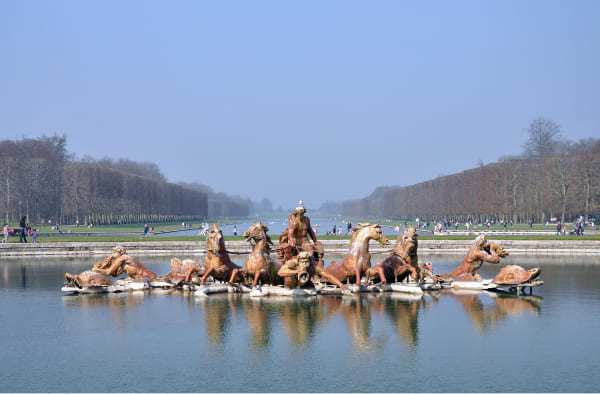
The André Le Nôtre creation Fontaine Latone (1668–1687) tells the tale of how Lycian peasants tortured and humiliated Latona and her children Diana and Apollo, who were then punished by turning into frogs. This serves as a reminder of how Anne of Austria, Louis’s mother, had been mistreated by French peasants during the so-called Fronde insurrection in the 1650s. As soon as the fountain is turned on, water showers over the peasants, who are agitated as they transform into creatures.
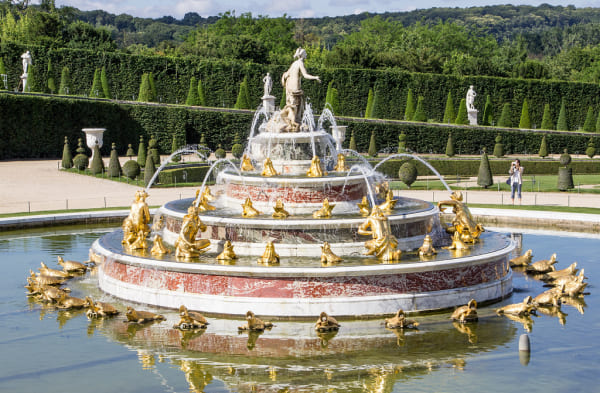
The Fountain of Neptune is the largest of the stunning fountain basins in the Versailles Gardens (Bassin de Neptune). Between 1679 and 1682, the fountain’s construction took place, under the direction of renowned landscape architect André Le Notre. Neptune and Amphitrite are among the three groups of statues that make up this structure. Louis XV constructed a brand-new fountain in the 1700s. After being installed with an extraordinary hydraulic system of 99 jets, it received praise for the strength and variety of the water jet it shot over the sculptural groups.
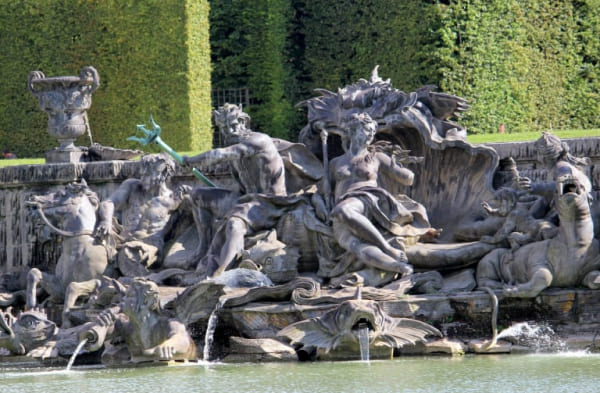
At the west of the Water Parterre and on either side of the central axis are two fountains. The Diana or Night Fountain in which a lion dragging down a wolf and a wild hog are seen. In The Dawn Fountain, a bear is killed by a tiger, and a stag is taken down by a bloodhound. These imposing fountains, which feature numerous horrific imagery, were created by Jules Hardouin-Mansart.
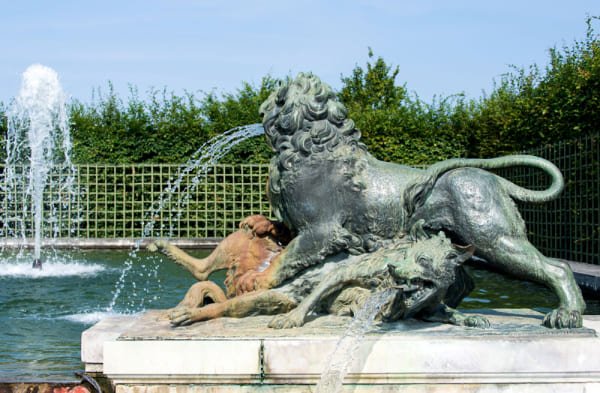
The Dragon fountain is a remarkable work of art that depicts a scene from the Apollo legend of how the young Apollo with an arrow shot dead a serpent Python. Dolphins on swans, each carrying a bow and arrow, encircle the reptile in the fountain. It is the tallest fountain at Versailles, with water rising 88 feet (27 meters) above the ground.
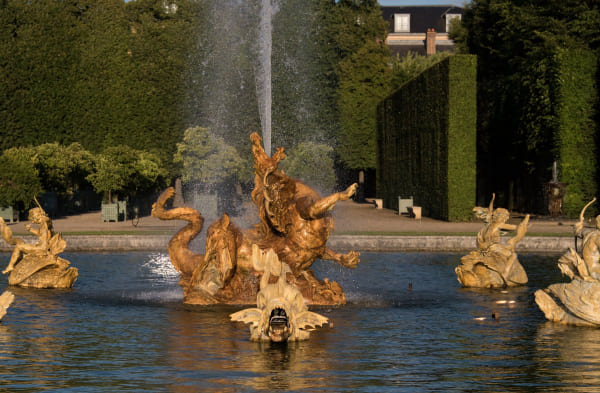
VERSAILLES PLACES
Versailles is a royal palace 20 kilometers outside of Paris, in the homonymous city of Versailles. It is one of the largest…
VERSAILLES PLACES
The Gardens of Versailles They are the most popular French gardens, not only in France but also in the rest of the world.
VERSAILLES PLACES
The park at Versailles ought to be mentioned as a unique location that amazes with its variety, beauty, and integrity. Additionally…
